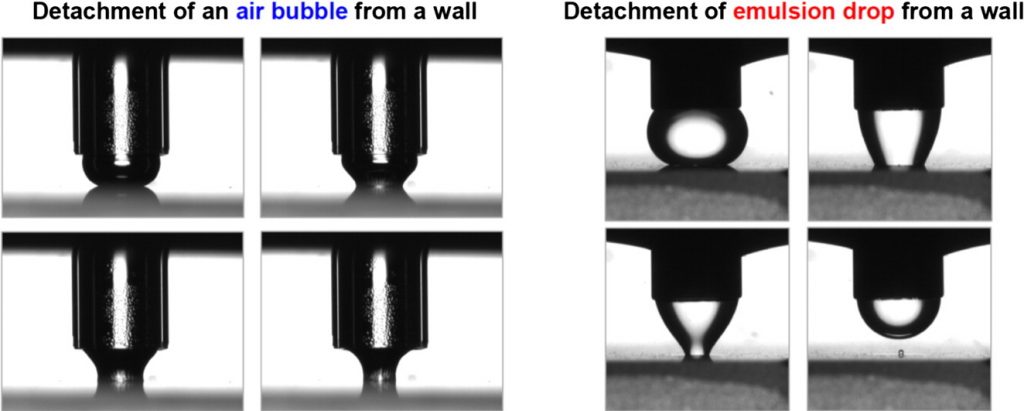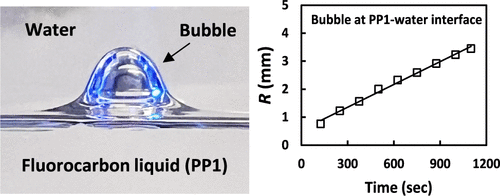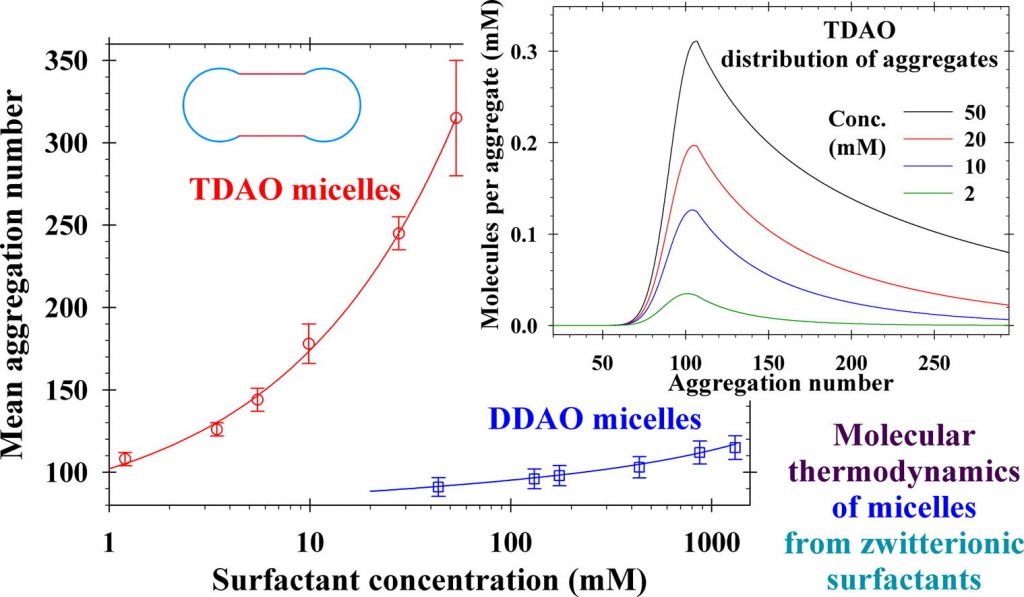
Prof. Krastanka G. Marinova, Ph.D.
Interests
- Cosmetics and Homecare Formulations
- Surfactant Adsorption and Interfacial Rheology
- Foams, Antifoams and Detergency
- Thin Liquid Films
Bio
M.Sc. in Physics (1991); Ph.D. in Physical Chemistry (2002); Assistant Professor (2003); Assoc. Professor (2010), Professor in Physical Chemistry (2025) in the Faculty of Chemistry and Pharmacy, University of Sofia “St. Kliment Ohridski”, Bulgaria. Vice Dean of the Faculty of Chemistry and Pharmacy (2012-2019). Coordinator of the Master’s program “Cosmetic Science and Homecare Formulations”. Member (from 2016) and elected President (April 2017) of the Bulgarian Association of Cosmetologists. She has been a visiting researcher in the Department of Chemical Engineering, University of Patras, (Patras, Greece, 1993) and in the Research Center of the company Rhodia Silicones Europe (Lyon, France, 1998). Her expertise includes experimental techniques for studying liquid interfaces (kinetics of adsorption and interfacial rheology), thin liquid films and foams, electrophoretic phenomena, computer methods for data processing and analysis, formulation of dispersions for cosmetics, personal and home care. Her main research interests are in the areas of kinetics of surfactant adsorption and interfacial rheology, incl. development of new experimental methods (in collaboration with Krüss GmbH, Germany); foams and antifoams; surface forces and stability of thin films, formulation of dispersions for cosmetics, personal and home care. She was the recipient of the award “Best Young Scientist” for 1999 of the University of Sofia Foundation “St. Kliment Ohridski”. So far, she has published more than 45 research and review articles, 1 patent, 2 patent applications, cited more than 1900 times in the scientific literature, h=20.
Publications
Featured publications
New surfactant mixtures for fine foams with slowed drainage
We form and investigate foams stabilized by a triple surfactant mixture containing a nonionic alkyl polyglucoside (APG) in addition to the combination of ionic sodium lauryl-dioxyethylene sulphate (SLES) and zwitterionic cocamidopropyl betaine (CAPB) surfactants. APG improves the surfactants compatibility at alkaline pH. The addition of a readily biodegradable chelating agent methylglycinediacetic acid (MGDA) in the mixture contributes further for the excellent performance even in very hard water. Foam properties are analyzed and compared to those of the single components and to the binary mixture without APG. Foam drainage is successfully controlled by introducing additives suitable for the alkaline conditions: fatty alcohol and/or hydrophobically modified starch. Systematic model experiments are performed to characterize the surface tension and dilatational rheology, and thin films drainage. Slowed foam and thin films drainage is confirmed to correlate with the increased surface visco-elasticity in the presence of fatty alcohols. Temperature impact on the surface properties is used for fine tuning of the foam drainage.
Adhesion of bubbles and drops to solid surfaces, and anisotropic surface tensions studied by capillary meniscus dynamometry
Here, we review the principle and applications of two recently developed methods: the capillary meniscus dynamometry (CMD) for measuring the surface tension of bubbles/drops, and the capillary bridge dynamometry (CBD) for quantifying the bubble/drop adhesion to solid surfaces. Both methods are based on a new data analysis protocol, which allows one to decouple the two components of non-isotropic surface tension. For an axisymmetric non-fluid interface (e.g. bubble or drop covered by a protein adsorption layer with shear elasticity), the CMD determines the two different components of the anisotropic surface tension, σs and σφ, which are acting along the “meridians” and “parallels”, and vary throughout the interface. The method uses data for the instantaneous bubble (drop) profile and capillary pressure, but the procedure for data processing is essentially different from that of the conventional drop shape analysis (DSA) method. In the case of bubble or drop pressed against a substrate, which forms a capillary bridge, the CBD method allows one to determine also the capillary-bridge force for both isotropic (fluid) and anisotropic (solidified) adsorption layers. The experiments on bubble (drop) detachment from the substrate show the existence of a maximal pulling force, Fmax, that can be resisted by an adherent fluid particle. Fmax can be used to quantify the strength of adhesion of bubbles and drops to solid surfaces. Its value is determined by a competition of attractive transversal tension and repulsive disjoining pressure forces. The greatest Fmax values have been measured for bubbles adherent to glass substrates in pea-protein solutions. The bubble/wall adhesion is lower in solutions containing the protein HFBII hydrophobin, which could be explained with the effect of sandwiched protein aggregates. The applicability of the CBD method to emulsion systems is illustrated by experiments with soybean-oil drops adherent to hydrophilic and hydrophobic substrates in egg yolk solutions. The results reveal how the interfacial rigidity, as well as the bubble/wall and drop/wall adhesion forces, can be quantified and controlled in relation to optimizing the properties of foams and emulsions.

Co-adsorption of the proteins ß-casein and BSA in relation to the stability of thin liquid films and foams
Most recent publications
Spontaneous bubble growth inside high-saturation-vapor-pressure and high-air-solubility liquids and emulsion droplets
Spontaneous bubble growths in liquids are usually triggered by rapid changes in pressure or temperature that can lead to liquid gas supersaturation. Here, we report alternative scenarios of the spontaneous growths of bubbles inside a high-saturation-vapor-pressure and high-air-solubility perfluorocarbon liquid (PP1) that were observed under ambient quiescent conditions. First, we investigate spontaneous bubble growth inside the single PP1 phase, which was left to evaporate freely. The bubble growth is explained by the difference in the PP1 vapor pressure inside the bubble and that above the freely evaporating PP1 interface. Next, we study the bubble growth inside the liquid PP1 covered with a layer of a second air-saturated immiscible liquid: low-air-solubility water or higher-air-solubility ethanol. In both cases, the bubble growth rates were accelerated, indicating mass transfer of air from the water or ethanol phases to the PP1 phase. The bubble growth rates significantly increase for bubbles trapped at the PP1–water or PP1–ethanol interfaces due to faster air diffusion through the thin PP1 liquid films separating the bubbles from the upper phases. Finally, we consider the case of bubbles inside millimeter-sized PP1 emulsion droplets in water or ethanol. The bubble growth inside the droplet leads to an increase in the PP1 droplet’s effective buoyancy and to the detachment of the droplets from the substrate. The observed bubble growth rate in the case of emulsion droplets was much faster for PP1 droplets in ethanol than for PP1 droplets in water (minutes vs hours). The underlying physical mechanism of the increase of bubble volumes is the spontaneous mass transfer of both air and PP1 vapor to the bubbles produced by a colloidal diffusion pump effect.

Investigation of the detergency properties of mixtures of biocides and nonionic surfactants using a new simplified hard surface cleaning method
The present study explores the cleaning efficacy of a set of nonionic surfactants (linear ethoxylated alcohol, secondary ethoxylated alcohols with 5, 7, and 9 ethoxy groups, glycoside surfactants, polyglycerol surfactants, and an ethoxylated sorbitan monolaurate) combined with cationic biocides—alkyl quaternary ammonium salts. A simple hard surface cleaning methodology was applied, which was shown to discriminate well between poor and good cleaning formulations. In addition to cleaning efficacy, surface aesthetics such as gloss and haze were evaluated together to assess surface streaking caused by a residual surfactant layer. The haziness determination turned out to be the key feature revealing the complex cleaning performance of multi-component products.

Investigation of cationic surfactants adsorption behaviour on silicon wafers using imaging ellipsometry
The research paper explores the adsorption properties of cationic surfactants on silicon wafers through imaging ellipsometry. The objective of this research is to shed light on the layer structures formed by cationic surfactants, specifically those based on dimethyl ammonium chloride, on silicon wafers. The study involved the deposition of three distinct cationic surfactants on the wafer’s surface, followed by the measurement of the adsorption layers formed. The findings reveal the creation of thin, smooth, and irregular adsorption layers. Interestingly, no correlation was found between the thickness of the adsorption layer and the surfactant tail’s chain length. The research underlines the significant role which the imaging ellipsometry can have for studying surfactants’ adsorption properties on surfaces, contributing to their optimal usage in various fields.
Analytical modeling of micelle growth. 5. Molecular thermodynamics of micelles from zwitterionic surfactants
Hypothesis: The critical micelle concentration, aggregation number, shape and length of spherocylindrical micelles in solutions of zwitterionic surfactants can be predicted by knowing the molecular parameters and surfactant concentrations. This can be achieved by upgrading the quantitative molecular thermodynamic model with expressions for the electrostatic interaction energy between the zwitterionic dipoles and micellar hydrophobic cores of spherical and cylindrical shapes. Theory: The correct prediction of the mean micellar aggregation numbers requires precise calculations of the free energy per molecule in the micelles. New analytical expressions for the dipole electrostatic interaction energy are derived based on the exact solutions of the electrostatic problem for a single charge close to a boundary of spherical and cylindrical dielectric media. The obtained general theory is valid for arbitrary ratios between dielectric constants, radii of spheres and cylinders, positions, and orientations of dipoles. Findings: The detailed numerical results show quantitatively the effects of the micelle curvature and dielectric properties of the continuum media on the decrease of the dipole electrostatic interaction energy. Excellent agreement was achieved between the theoretical predictions and experimental data for the critical micelle concentration, size and aggregation number of zwitterionic surfactant micelles. This study can be extended to mixed micelles of zwitterionic and ionic surfactants in the presence of salt to interpret and predict the synergistic effect on the rheology of solutions.

Rheology of saturated micellar networks: Wormlike micellar solutions vs. bicontinuous micellar phases
The subject of this work is to investigate the rheological behavior of mixed micellar solutions (sodium laurylethersulfate and cocamidopropyl betaine) in the presence of Mg2+ divalent counterions. With the rise of salt concentration, the viscosity of micellar solutions increases to a high maximum followed by a steep decrease because of the initial growth and entanglement of wormlike micelles and a subsequent transition to branched micelles forming of a saturated micellar network. The proposed systematic rheological measurements show considerable variations in the rheological responses of the solutions when increasing the salt concentration. Rheological behavior and data are used to distinguish the micellar phases and to study the relation to micellar structures. The wormlike micellar solutions have a typical shear thinning behavior with a well-defined zero-shear viscosity, η0, described by the Cates reptation-reaction model or the augmented Maxwell model. Our data show that the power law dependence of η0 on the surfactant concentration is stronger than that reported in the literature and it is influenced of the added electrolytes. The branched micellar structures are characterized by the lower viscosities and larger elasticities, which follow the Maxwell model up to the intermediate values of the frequency of oscillations, however peculiar deviations from the Cole-Cole plot at large frequencies are detected. The isolated bicontinuous micellar phases are Newtonian fluids with viscosity 0.4–0.7 Pa.s independent on the salt concentration up to high shear rates. The threshold salt concentration ensuring the onset of the bicontinuous micellar phase is described by a simple empirical rule. These phases are characterized by large elasticities and not negligible yield stresses. The property of the bicontinuous micellar phases to form spontaneously oil-in-water nanoemulsions could find applications in drug delivery, extraction and separation processes, pharmaceutics production, etc.

